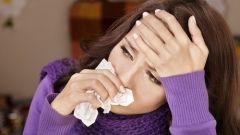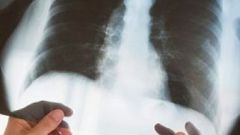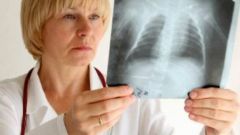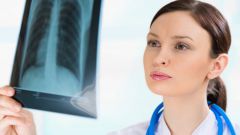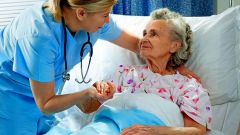Often with pneumonia the man does not even know that he had health problems, and not go to the doctor, hoping to cure home remedies. As a result, the health can be caused great harm. Therefore, it is important to know what are the symptoms of pneumonia, especially in the early development of the disease as soon as possible to start treatment.
In most cases, the beginning of pneumonia is manifested by such signs as cough, runny nose, sneezing. Then comes the increase in temperature and lack of energy – fatigue, weakness. After some time, these symptoms can be accompanied by shortness of breath, sensation of shortage of air. Often also the beginning of pneumonia evidence of severe sweating that cannot be explained by objective reasons (hot weather, heavy physical load, etc.). With such signs it is necessary to contact the doctor and undergo an examination that includes a chest x-ray, and in different projections.
However, pneumonia can be accompanied by other symptoms. For example, it often develops as a complication on a background of influenza. Then her symptoms are: pain ("aching") in the joints and muscles, headache, extreme weakness in the body. Runny nose and sneezing, as a rule, no. Cough causes pain in thorax, often sputum. When such symptoms should immediately consult a doctor and to refuse admission if it is offered.
If the pathogenic agent that caused the pneumonia are bacteria of the genus "legionella", the initial symptoms are: lethargy, weakness, sore throat. Often the onset of the disease is accompanied by severe diarrhea.
Pneumonia caused by a specific type of microorganisms – Mycoplasma, the first signs of the disease are: generalized weakness (though in most cases, a minor), headache, sore throat, and prolonged cough – initially dry, then with sputum. There is swelling of the nasopharynx, can develop bronchitis. Body temperature increased slightly. But on day 5-7 of illness it can reach 39-40oC. Bring down the high body temperature in the home is sometimes very difficult.
In any case, the correct diagnosis and prescribe treatment can only a doctor. Therefore, it is better not to risk and to seek medical advice.
Classic signs of incipient pneumonia
In most cases, the beginning of pneumonia is manifested by such signs as cough, runny nose, sneezing. Then comes the increase in temperature and lack of energy – fatigue, weakness. After some time, these symptoms can be accompanied by shortness of breath, sensation of shortage of air. Often also the beginning of pneumonia evidence of severe sweating that cannot be explained by objective reasons (hot weather, heavy physical load, etc.). With such signs it is necessary to contact the doctor and undergo an examination that includes a chest x-ray, and in different projections.
The symptoms of developing pneumonia
However, pneumonia can be accompanied by other symptoms. For example, it often develops as a complication on a background of influenza. Then her symptoms are: pain ("aching") in the joints and muscles, headache, extreme weakness in the body. Runny nose and sneezing, as a rule, no. Cough causes pain in thorax, often sputum. When such symptoms should immediately consult a doctor and to refuse admission if it is offered.
If the pathogenic agent that caused the pneumonia are bacteria of the genus "legionella", the initial symptoms are: lethargy, weakness, sore throat. Often the onset of the disease is accompanied by severe diarrhea.
Pneumonia caused by a specific type of microorganisms – Mycoplasma, the first signs of the disease are: generalized weakness (though in most cases, a minor), headache, sore throat, and prolonged cough – initially dry, then with sputum. There is swelling of the nasopharynx, can develop bronchitis. Body temperature increased slightly. But on day 5-7 of illness it can reach 39-40oC. Bring down the high body temperature in the home is sometimes very difficult.
In any case, the correct diagnosis and prescribe treatment can only a doctor. Therefore, it is better not to risk and to seek medical advice.

